Aysha E Arar, « Dear red bird, look at me in the eyes », Paris
« Dear red bird, look at me in the eyes »
a solo show by Aysha E Arar
Opening on April 27, 4 – 8:30pm
Performance, 6:30pm
with Sulafa Elyas & Ana Khalife
Yesterday I wondered where I could go so no one could find me, dispossess me, or take me away. Some of us invent worlds in which we take refuge; shelters only accessible to the self. These are places of infinite freedom, resources, and imagination. Aysha E Arar gives shape to some of these liminal spaces.
These spaces unfold on large, off-white canvases, often hung with pins and needles. Like veils or shrouds, they reveal and hide the walls of the galleries, adorning and creating new surfaces and rooms. The surfaces on which Aysha E Arar paints have curvilinear, and at times, jagged outlines, as if the limit between the work and reality was in question. Some of the textiles drape down to the floor while some overspill beyond the right angles of a room; others, like collages, are cut to follow the outlines of her painted motifs.
In Aysha E Arar’s works, painted feathered animals recur. Evoking ‘The Conference of Birds’ by Persian poet Farīd al-Dīn ‘Attār, the artistic work gives form to a spirituality that is not separate from the plane of the living. Rather, it encompasses the totality of existence. For her, the bird symbolises the one who can leave terra firma for the sky, and then later return to it. Arar’s painting might be seen through the lenses of Attar’s poem: an epic and iconographic metaphor for a spiritual quest. How many of the birds will be at the finish line, having crossed those trials, like so many ordeals that represent the stages leading to spiritual fulfillment: quest, love, knowledge, detachment, uniqueness, humility, and poverty.
In Arabic, the letter “’ayn”, ع, can be translated as “eye” or “look”. In the exhibition, it is the window through which we perceive and contemplate our essence. These are so many spirits and presences, so many souls that are held back or have left us. Children who are denied the right to dream and hope are confined to a secluded space where there is no more room to exist and where life is made precariously haunted by the specter of death. Aysha E Arar has observed, her work is also a metaphor – for the loss of Eden, for the sorrows of dispossession and exile. As Palestinian poet, Mahmoud Darwish, she uses painting but also poems. Imagining is one form of freedom, as for her, “poetry and painting is an active freedom.”
There is a whole poetics of the ground at work here. The footprints evoke both the earth, which is removed and dispossessed, and walking, the gesture par excellence of rising. An uprising is not an abstract gesture. Rising involves getting up, standing up and walking. There are many ways of walking. The gesture has as many meanings as there are collectives and policies. When some people walk, it’s to advance towards a goal. Its opposite is wandering. But Aysha E Arar’s visual marches evoke marches that have no goal other than themselves. Walking to be, walking to bear witness to resistance, walking to remind us of the insistence of liberation. Liberation already comes through the very act of walking, which calls for another horizon and another world.
A reflection on silence and scream, or rather on scream as silence, the image of a monster that screams but has neither language nor voice. This work cries out our political powerlessness in the face of oppression. But it does so at the intersection of the visible and the invisible, or more precisely, the inaudible. Screaming and silence are the two extremes of speech that the oppressive voice of resistance identifies, eliminating the entire field of the audible. Stripped of all possible speech, and rendered silent by the deafness of the Other, what is left to do but paint? It is here that the visible - painting, drawing, color - is summoned to speak in a different, more powerful way than when a painting is said to speak because it expresses something to which its author holds the key.
Silence is itself seen, given a form: an eye (ayn, ع). It is thus given a scene in the name of its absent voice. There is an eye watching this monster, agonizing over the silence of its own cry, which it itself cannot hear. This eye is the gaze of truth and reality. In Arabic, the two terms are not separated. We say al-Haqq, which means both the true and the real, as well as, in other contexts, the right or the fact of being right. It is also one of the principal names of the divine: the Real. The eye of reality, a more-than-human eye that the artist neither necessarily nor explicitly identifies with God, is the eye that witnesses injustice. It is not morally possible to assert that only humans witness injustice when “humans” are so incapable of putting an end to the monstrosity of screaming silences.
Aysha E Arar sometimes sprinkles her paintings with a few flowers, often symbolizing rebirth and the cycle of life since ancient civilizations such as Egypt. As if the only path towards hope was to be found in the secrets of life itself.
Anissa Touati
Mohamed Amer Meziane
–
Aysha E Arar is a Palestinian artist born in 1993. She received her BFA with honors from the HaMidrasha Faculty of Arts - Beit Berl College in 2018.
She has had solo exhibitions at Dvir Gallery, Tel Aviv & Brussels (2023); Beit HaGefen, Haifa (2023); Hayarkon 19, Tel Aviv (2022); Givat Haviva Art Gallery (2021).
Selected group exhibitions include: MO.CO. Panacée, Montpellier (upcoming); Sans titre, Paris (2024, 2022 & 2021); TAGELDIMDE / MIDDELGATE, Geel (2023); Edmond de Rothschild Center, Tel Aviv (2022); Umm al-Fahm Gallery (2022); Alfred Institute for Art and Culture, Tel Aviv (2021); Kultur Forum Dresden e.V., Dresden (2021); Albertinum Museum, Dresden (2021); Artura Gallery, Kfar Monash (2021); Balkont Gallery, Tel Aviv (2019); Dvir Gallery, Tel Aviv (2018); Ethiopian Embassy, Tel Aviv (2017); Helena Rubinstein Pavilion for Contemporary Art, Tel Aviv Museum, Tel Aviv (2017); Tel Aviv Cinematheque, Tel Aviv (2016); Excellence Project of the Jewish Festival, Krakow (2016).
Aysha E Arar’s works are featured in the collections of significant institutions and museums, including Lafayette Anticipations - Fonds de dotation Famille Moulin (Paris, France), FRAC Corsica (Corte) and SMAK - Stedelijk Museum voor Actuele Kunst (Ghent, Belgium).
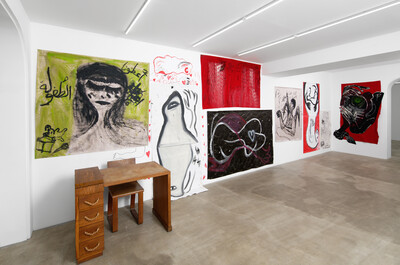
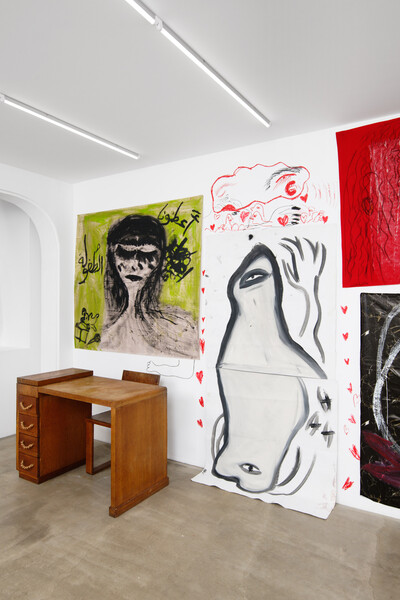
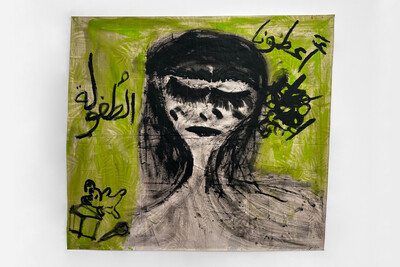
Aysha E Arar, Give us our childhood, 2024, acrylic on tablecloth, 137 × 153 cm, unique
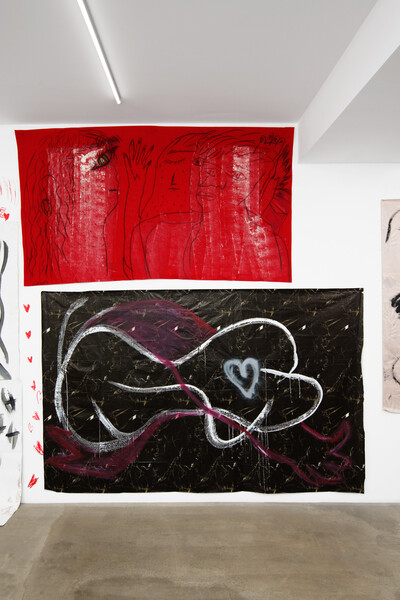
Aysha E Arar, Hello strangers, 2024, gesso, charcoal and mixed media on fabric, unique & Aysha E Arar, Hob, 2024, acrylic on tablecloth, 139 × 220 cm, unique
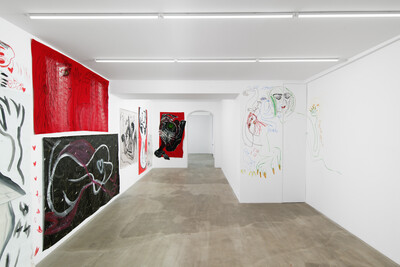
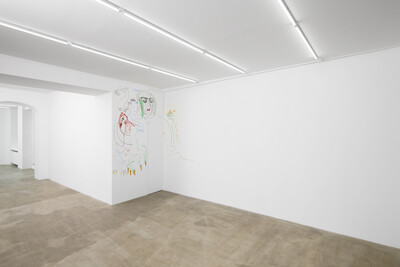
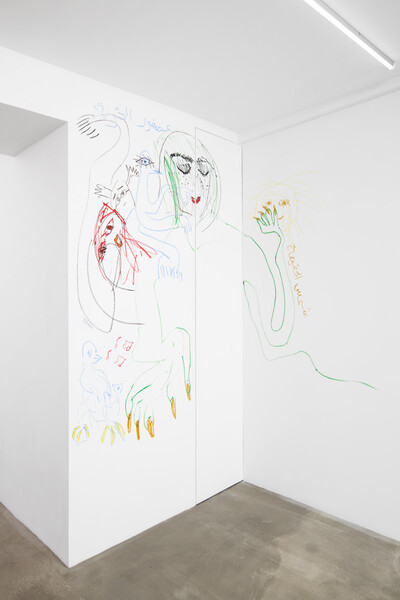
Aysha E Arar, The bird of freedom is calling the sun of the truth, 2024, oil pastels on wall, variable dimensions
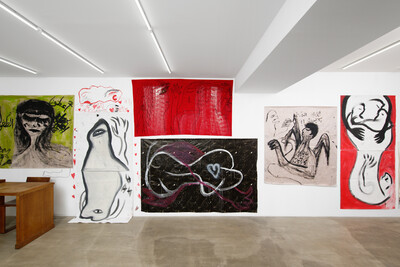
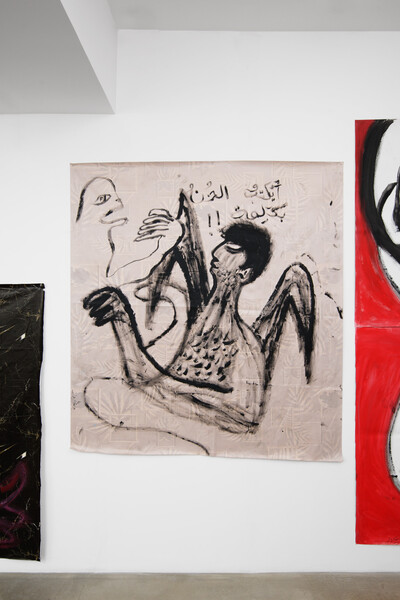
Aysha E Arar, Can sadness be written in one word?, 2024, acrylic on tablecloth, 146 × 137 cm, unique
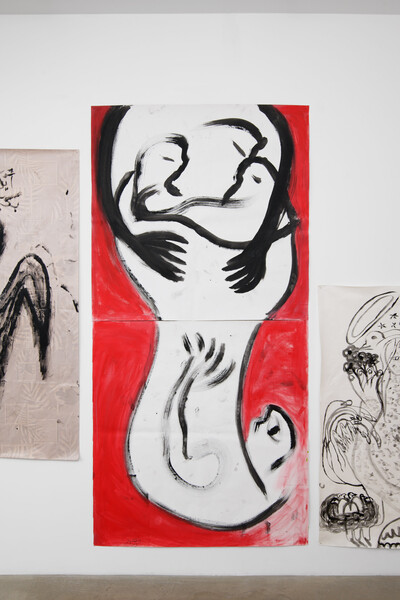
Aysha E Arar, A family from Palestine, 2024, acrylic on canvas, 214 × 105 cm, unique
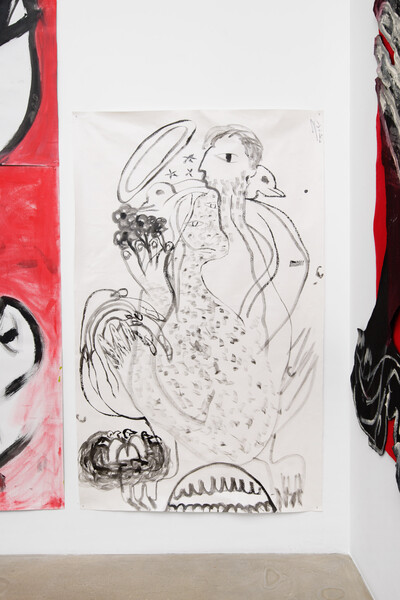
Aysha E Arar, Oshaq, 2024, acrylic and charcoal on canvas, 126 × 80 cm, unique
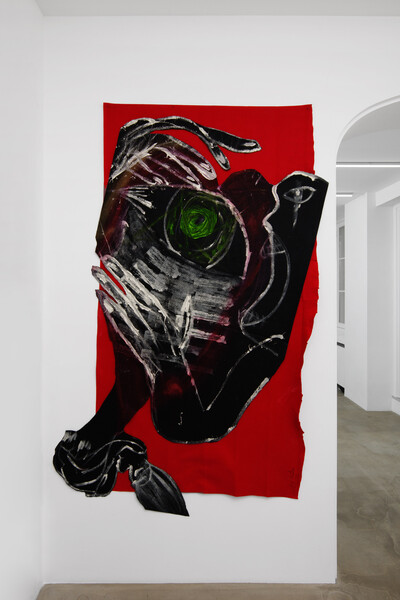
Aysha E Arar, Moqatila, 2024, acrylic on canvas, fabric, 196 × 127 cm, unique
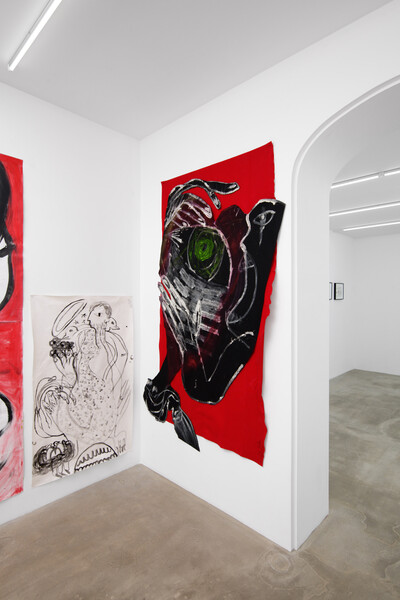
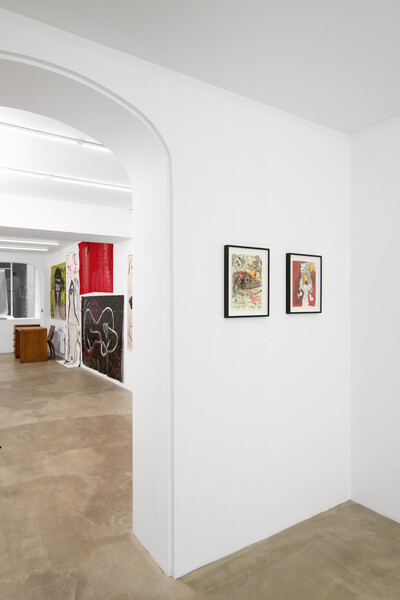
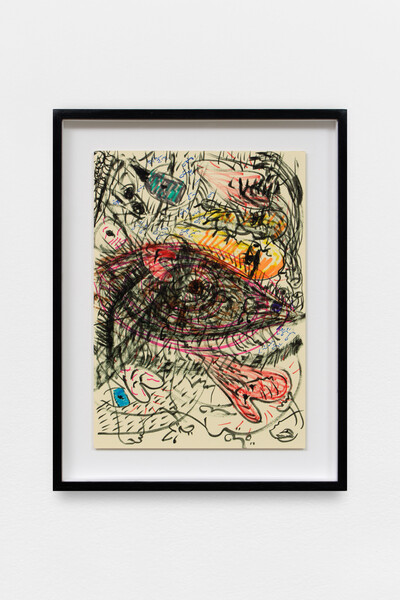
Aysha E Arar, Love, life and freedom, 2024, pen on paper, 39.4 × 30.5 cm (framed), unique
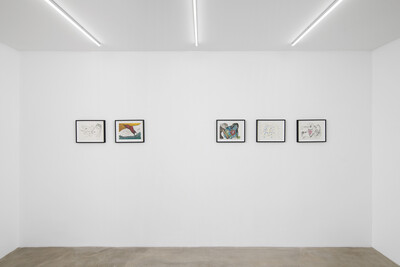
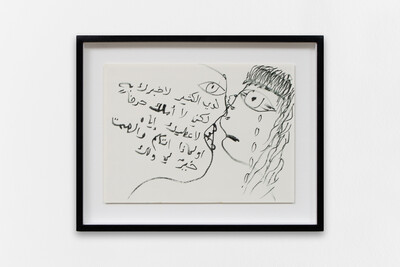
Aysha E Arar, I have a lot to tell you, but I don’t have a word to give you. Why should I speak when silence is better for me and for you?, 2024, pen on paper, 37 × 29.3 cm (framed), unique
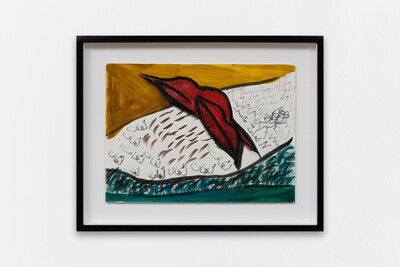
Aysha E Arar, Love has always been the common language, 2024, pen on paper, 37 × 29.3 cm (framed), unique
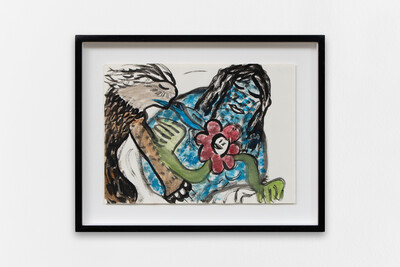
Aysha E Arar, A call from blue bird, 2024, pen on paper, 37 × 29.3 cm (framed), unique
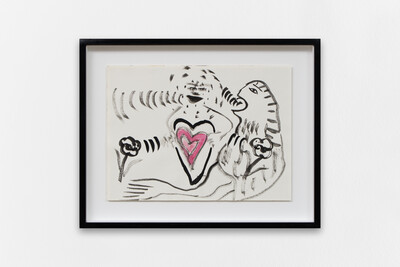
Aysha E Arar, Even flower do love you, can you believe?, 2024, pen on paper, 37 × 29.3 cm (framed), unique